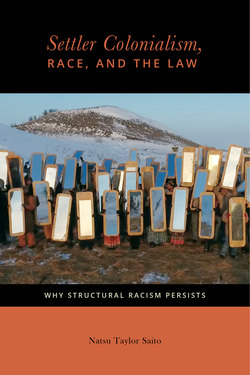Читать книгу Settler Colonialism, Race, and the Law - Natsu Taylor Saito - Страница 37
На сайте Литреса книга снята с продажи.
Sterilization
ОглавлениеReproductive control allows for the disappearance of entire peoples without killing individuals. For this reason international law recognizes attempts to eliminate a people by “imposing measures intended to prevent births within the group” as a form of genocide.55 During the 1960s and 1970s about one-third of Puerto Rican women and one-quarter of African American women were sterilized, generally as the result of some form of coercion and often without even being informed.56 As mind-boggling as those statistics are, the highest rate of sterilization—42 percent—was among American Indian women, who were generally dependent on the Bureau of Indian Affairs (BIA)’s Indian Health Service (IHS) for all of their medical care.57 In 1965 the IHS began “family planning” programs and in 1970 the agency inaugurated a sterilization campaign. Women were routinely sterilized without their knowledge, or after signing “consent” forms that they did not understand, or without being informed that they had a right to refuse.58 As a result, the average number of children born to American Indian women between 1970 and 1980 dropped by more than 50 percent.59
While federally mandated sterilization was clearly intended to reduce the American Indian population, is it accurate to attribute it to American settler society’s drive to possess and control the land? The doctors who told teenage girls that they were getting tonsillectomies and then removed their ovaries probably did not expect to be personally rewarded with land grants.60 Nevertheless, the program was conceived, funded, and implemented by institutional actors intending to trigger a dramatic decline in the American Indian population, at a time when the legitimacy of US claims to the “integrity” of its land base were under serious attack. The direct and predictable result of this sterilization program is that the current generation of young American Indian adults is perhaps half as large as it might otherwise have been.61
